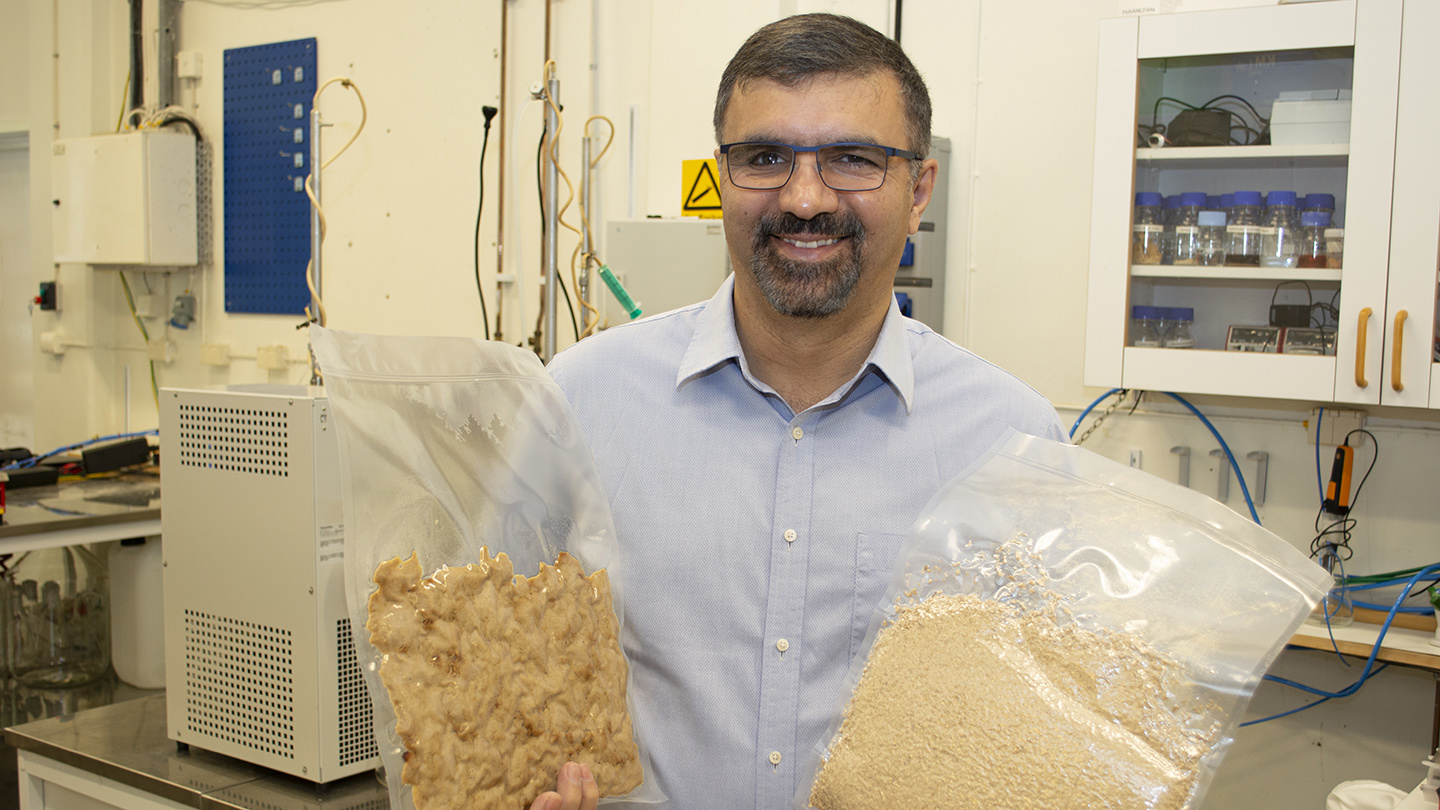After 20 years of research – new products made from the super fungus are ready for the market
2020-07-15

Twenty years ago, Mohammad Taherzadeh, Professor of Bioprocess Technology at the University of Borås, noticed an ordinary, but very interesting, kind of fungus that is both used as a food in Indonesia and to produce ethanol from residue and waste materials. Since then, Mohammad Taherzadeh and the research team in Resource Recovery have examined over 100 species of fungus and among these they have focused on a handful of species, all of which are edible and, in several parts of the world, are included in different kinds of dishes.
"The beauty of the fungi we are looking at is that they can be eaten and they are not harmful to the environment. The fungi also consist of about 50 percent protein and can be seen as a substitute for animal protein.”
Initially, Mohammad Taherzadeh's research was about finding an alternative to baker's yeast, which is used in the production of ethanol, to find a more efficient microorganism to break down cellulose from forest and agricultural waste. The fungi examined are good at breaking down different sugars and can also produce ethanol. Different processes were developed and presented to the processing industry.
Research has changed direction
In recent years, however, research into fungi has changed direction. Now, the research team is interested in the fungi themselves, not only as waste from ethanol production but as the main ingredient, to develop new materials and products. Among all the research projects carried out over the years, the researchers have worked on developing bioplastic film or superabsorbers of the fungi's cell walls that consist of the substance chitosan. They have also seen that it is possible to extract the substance glucosamine, which is used, among other things, in osteoarthritis medicine, which is currently mainly extracted from shrimp and crayfish shells. In collaboration with Lantmännen Agroethanol, several projects in addition to ethanol were about developing processes for the production of feed from fungi. Another project involves growing fungi on discarded bread and then making yarn that could ultimately become clothes.
The joy of seeing research results realised as a physical product
The research on the fungi has reached what a researcher probably looks forward to most, to seeing real results from all the work. Next up is now to produce human food from the fungi. Through the Way2Taste project, which is halfway complete, various products that can replace animal protein have been developed and tested.
"We are all the way to product development and in the near future we will be ready to release commercial products. And it makes me happy – that we are not only producing theses and publications, but that we, together with others, have reached the point in our research that actually means physical products can be introduced to the market and can benefit society," says Mohammad Taherzadeh.
The protein bar is such an example.
"It has been developed in collaboration with the company Raw Food in Borås. In another collaboration effort, this one with a bakery, fungi are to be baked into bread. The challenge now is to help companies get products onto the market," says Mohammad Taherzadeh.
In a previous interview in the research magazine 1866, you have spoken about how no one knows how much can be done with the fungi and compared it to climbing up a high mountain, and once at the top, seeing only more and bigger things. What do you see today beyond the mountain?
“One challenge is to raise interest in the fungi in businesses when it comes to potential producers and among the public. Maybe not everyone is interested in eating the fungi in their current form. It is important to develop products that are appealing. For example, to make it look, feel and taste like product that already exists, that people recognise. “
What is the future of research into the fungi?
"In our research area, bioprocess technology, we have changed our focus from producing biofuels to focusing on processes for food production using the fungi. We are currently developing a new lab for this. It will be very exciting and we have many project ideas in the pipeline. The only limit is your imagination,” concludes Mohammad Taherzadeh.
Facts
The type of fungi mainly used in research at the University of Borås belongs to the phylum Ascomycota, primarily the fungus Neurospora intermedia, which originates in the Indonesian dish Oncom. The fungus can be grown on forest and agricultural waste, in this case it produces ethanol, and can be grown on pure food waste where it can be used for the production of animal feed or food for humans. The fungus consists of about 50 percent protein. It can be used as it or it can be dried into a protein powder which is then used in other products. The challenge is to develop products that appeal to consumers.
Read more
Solveig Klug
Solveig Klug

